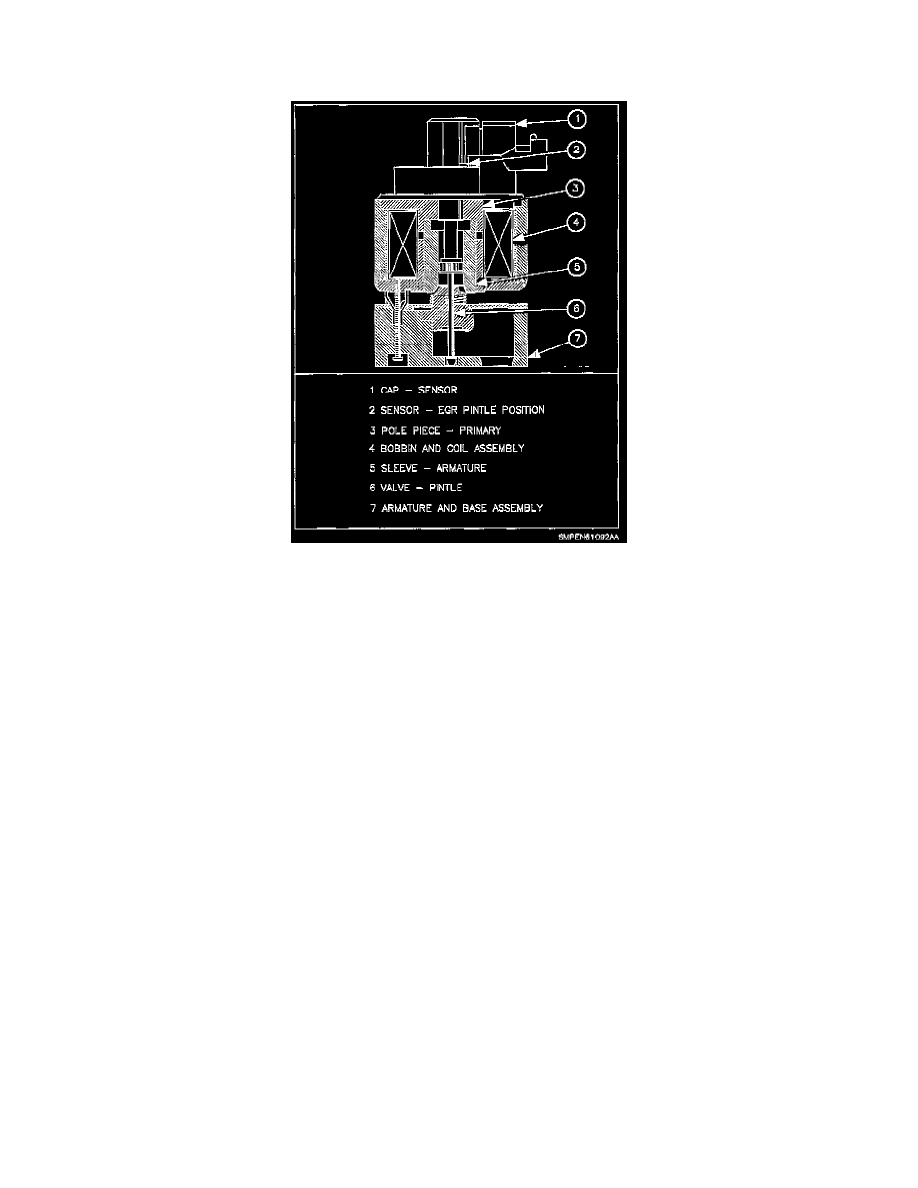SW2 L4-1.9L DOHC VIN 7 (1997)

-
"B" is sensor ground.
-
"C" is sensor output.
-
"D" is +5 volts supply.
Electrical Components Of Linear EGR Valve
The solenoid (bobbin and coil) assembly is energized by current which enters the valve through an electrical connector (terminal "E"), then flows
through the solenoid assembly to the PCM creating an electromagnetic field. This field causes the armature assembly to be pulled upward, lifting the
pintle a variable amount off the base.
The exhaust gas then flows from the cylinder head exhaust port (through the orifice) to the intake manifold. The height of the pintle is read by the pintle
position sensor, and the control module closes the loop as desired position versus actual position read, changing the pulse width modulated command to
the solenoid accordingly, until the actual pintle position equals the desired pintle position.
This results in improved flow accuracy. In most EGR designs, the flow is "Open Loop," in which the system has no feedback mechanism to monitor
actual flow and then to correct it. The linear EGR valve is unique in that the control module continuously monitors pintle height and continuously
corrects it in order to obtain accurate flow, making linear EGR a "Closed Loop" system. When the solenoid is de-energized (control module breaks the
circuit), the pintle is sealed against the orifice, blocking exhaust flow to the intake manifold. When the solenoid is energized, engine vacuum acts to draw
exhaust gases through the cylinder head passages, linear EUR valve, intake manifold and into each cylinder. Although the opening looks small, the EGR
valve pintle is the flow limiter in the system.
The results of incorrect operation with too much EGR flow at idle, cruise, or cold operation, any of the following conditions could occur.
^
Engine stops after cold start.
^
Engine stops at idle after deceleration.
^
Vehicle surges during cruise.
^
Rough idle.
If the EGR valve should stay open all of the time , the engine would not idle. The results of incorrect operation with too little or no EGR flow allows
combustion temperatures to get too high during acceleration and load conditions. This could cause:
^
Spark knock (detonation).
^
Engine overheating.
